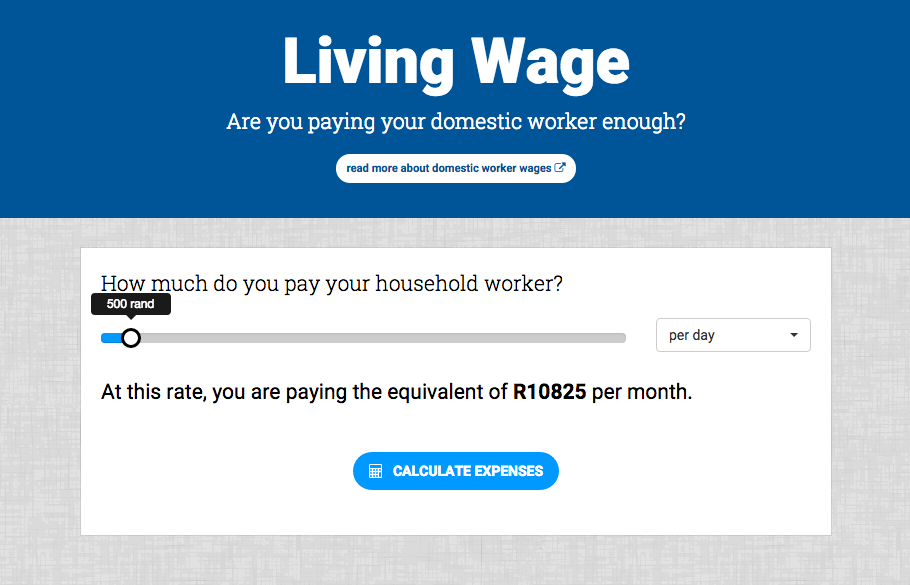Code for South Africa (Code4SA) recently launched the Living Wage Calculator on News24, South Africa’s biggest news website. The calculator is a tool that helps South Africans work out if they’re paying their domestic workers fairly.
As a piece of data journalism, it hit all the sweet spots: it was seductively interactive, it produced fresh data around an important issue, and it was capable of being spun off into new uses, and new stories.
The original idea came to Adi Eyal, the director of Code4SA, when he found himself chatting with parents at a birthday party about salaries for domestic workers. He realized that most people arrived at an amount by asking their friends and relatives what they paid rather than trying to establish what actually constituted a living wage.
Eyal decided to do something about this. Using a Harvard intern to do the research, Code4SA produced a calculator that factored in nine assumptions about a domestic worker’s cost of living. These include the size of the worker’s household, the cost of food and transport, housing, education, entertainment and so on. The tool was produced in a week and a half.
The idea was not to produce a tool that was rigorous and scientific, but one that would spark conversation, drive employers to examine unconscious assumptions, and prompt people to think about the lives of domestic workers.
In South Africa, domestic workers make up 6 percent of the labor force, so this is a tool that can potentially affect a large swath of the population, including employers. At time of this writing, more than 46,000 users had actively used the tool, and more than 4,000 others had read the excellent story package produced by journalist Kim Harrisberg under the guidance of ICFJ Knight Fellow Ray Joseph, the editorial director on the project.
The wage calculator features a brief survey asking employers to reveal the daily rate they pay their domestic workers, and 12,037 people responded. Of those, 11,467 responses were adjudged by Eyal to be “clean” or reliable data. The result is probably the largest current data set about domestic workers’ wages in South Africa. Eyal is working to make it possible to drill down and access data on a provincial level.
You can check out the raw data, as well as an interactive provincial breakdown. (Caveat: this is very much a work in progress.)
The new data has enabled the story to grow and evolve. Eyal has produced blogs highlighting the issue of poor salaries, and other spinoffs have included radio interviews and news stories. The data set raises some intriguing questions, such as why many domestics in Limpopo province are paid R30 - R80 (US$2.35 - $6.30) per day, while those in the Western Cape are paid R180 - R250 (US$14 - $19.50).
I asked Eyal what was the next move. “We have been approached by a research group at Wits University who are doing some work on the national minimum wage,” he said. “They are interested in adapting the tool to appeal to other low-income workers.”
Meanwhile, anecdotal evidence, mainly from people commenting on the News24 site, indicates that at least a few households have increased the wages of their domestic workers, following use of the Living Wage Calculator.
The real test of long-term efficacy will come with the rollout of other iterations of the technology, and of new deployments of the tool that use the data collected in the first iteration. But overall, the Living Wage Calculator is a good example of how a simple idea, based on rudimentary data, can generate great stories and user-interaction.
Chris Roper is a data editor at Code for Africa. Learn more about his work as an ICFJ Knight Fellow here. 
Image CC-licensed on Flickr via Hans Splinter. Secondary image: screenshot of Living Wage Calculator

